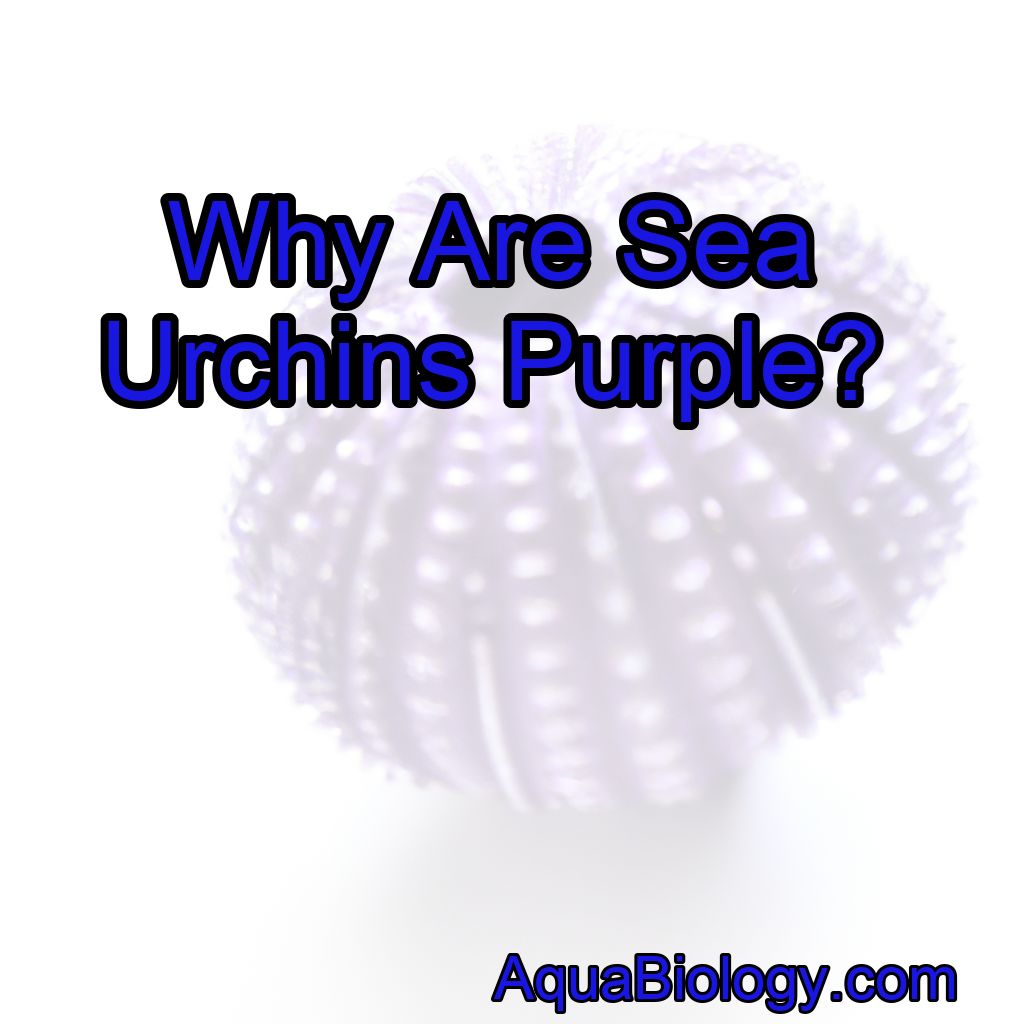As a marine biologist, I have always been fascinated by the incredible diversity of life in our oceans. From the vibrant corals to the graceful dolphins, there is so much beauty to discover beneath the waves.
Sea urchins are purple due to pigments in their exoskeleton.
One creature that has always captured my attention is the sea urchin, with its spiky exterior and unique shape. But what has always intrigued me the most about these fascinating creatures is their stunning purple coloration.
Why are sea urchins purple? In this blog post, I will explore this question and delve into the science behind this captivating hue.
1. The Pigment Responsible for the Purple Color
When you think of a sea urchin, the first thing that comes to mind is its spines.
However, it is the small, round body underneath those spines that is responsible for the striking purple color.
This body, known as the test, is covered in a layer of skin that contains pigments called echinochromes.
It is these pigments that give the sea urchin its characteristic purple hue.
2. The Role of Echinochromes in Sea Urchins
Echinochromes are not just responsible for the color of sea urchins; they also serve a crucial role in the animal’s survival.
These pigments are believed to act as a defense mechanism, protecting the sea urchin from harmful UV radiation.
Similar to how melanin protects our skin from the sun’s rays, echinochromes shield the sea urchin’s delicate tissues from potential damage.
3. The Chemical Composition of Echinochromes
The exact chemical composition of echinochromes is still not fully understood, but researchers have identified several compounds that contribute to the purple color. One study found that the main pigment, echinochrome A, is a type of quinone.
Quinones are organic compounds that are known for their vivid colors, and they are found in various marine organisms.
4. The Production of Echinochromes

Sea urchins produce echinochromes through a complex biological process.
These pigments are synthesized by special cells called coelomocytes, which are found in the sea urchin’s body cavity.
The coelomocytes produce and release echinochromes into the skin, giving the sea urchin its distinctive purple color.
5. The Role of Diet in Sea Urchin Coloration
While the production of echinochromes is genetically determined, the exact shade of purple can vary depending on the sea urchin’s diet. Studies have shown that sea urchins that feed on certain types of algae containing specific pigments can develop different shades of purple.
This suggests that the availability of these pigments in their diet influences the coloration of sea urchins.
6. The Significance of Purple Coloration
Beyond their aesthetic appeal, the purple coloration of sea urchins may also play a role in communication and mate selection.
Some studies have suggested that the intensity of the purple color can indicate the health and vitality of an individual sea urchin, making it an attractive mate for reproduction.
7. The Evolutionary Advantage of Purple Coloration
In the underwater world, where camouflage is crucial for survival, the purple coloration of sea urchins may seem counterintuitive.
However, it is believed that the purple hue acts as a form of aposematism, warning potential predators of the sea urchin’s spines and potentially toxic tissues.
By sporting a vibrant, attention-grabbing color, sea urchins may deter predators from attacking them.
In conclusion, sea urchins are purple due to the presence of pigments called echinochromes in their skin.
These pigments not only give them their distinctive color but also serve as a protective mechanism against harmful UV radiation.
The production and exact chemical composition of echinochromes are still being studied, but it is clear that diet plays a significant role in determining the shade of purple in sea urchins.
Furthermore, the purple coloration may have evolutionary advantages, such as communication and warning potential predators.
So, the next time you spot a purple sea urchin, take a moment to appreciate the beauty and complexity of nature’s color palette.
Five Facts about Sea Urchins and their Purple Coloration:
1. Sea urchins get their purple color from pigments called echinochromes found in their skin.
2. Echinochromes protect sea urchins from harmful UV radiation and act as a defense mechanism.
3. The production of echinochromes occurs in special cells called coelomocytes found in the sea urchin’s body cavity.
4. The shade of purple in sea urchins can vary depending on their diet, specifically the pigments present in the algae they consume.
5. The purple coloration of sea urchins may serve as a form of aposematism, warning potential predators of their spines and potentially toxic tissues.
FAQs
Can sea urchins be purple? Yes, sea urchins can be purple.
In fact, some species of sea urchins are naturally purple in color.
What colors can sea urchins be?
Sea urchins can come in a variety of colors including black, purple, red, orange, yellow, green, blue, and white.
What makes sea urchins purple?
Sea urchins are purple due to the presence of pigments called echinenone and astaxanthin in their spines and shells.
These pigments help protect the sea urchins from harmful UV radiation and also play a role in their communication and mating behaviors.
What happens if you touch a purple sea urchin? If you touch a purple sea urchin, you may experience a painful sting or prick from their sharp spines.
Additionally, their spines can break off and become embedded in your skin, which can cause further irritation and potential infection. It is best to avoid touching sea urchins altogether.
Which sea urchins are poisonous?
Some species of sea urchins, such as the flower urchin (Toxopneustes pileolus) and the slate pencil urchin (Heterocentrotus mamillatus), have venomous spines that can cause painful and potentially dangerous stings.
Are purple sea urchins poisonous?
No, purple sea urchins are not poisonous to humans.




